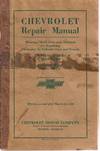
Pyrosomes et Appendiculaires provenant des campagnes de l'Hirondelle et de la Princesse-Alice (1885-1910)
by Kruger, Paul
- Used
- Paperback
- first
- Condition
- See description
- Seller
-
North Garden, Virginia, United States
Payment Methods Accepted
About This Item
Monaco: Monaco Press, 1912. First edition.
SCARCE LARGE FOLIO MONOGRAPH ON MARINE INVERTEBRATES COLLECTED IN 1885-1910, PUBLISHED BY ALBERT I, PRINCE OF MONACO, ILLUSTRATED WITH FINE LITHOGRAPHS.
Large folio, 11 x 14 inches tall printed transparent paper wraps over card covers which include the coat-of-arms of the Prince of Monaco. Text printed on heavy rag paper, (3), 38 pp, 2 very fine lithographed plates, one partially colored, by Werner & Winter, and a large folding map . Text in French. Spine sunned, handstamp of Frederick M. Bayer top front cover, text clean and unmarked, plates bright and clean. Very good, in custom archival folder. This monograph is a fine example of late 19th century marine biology, with detailed descriptions and magnificant lithographs. It forms part of a series of scientific reports on marine life collected by Albert the 1st, Sovereign Prince of Monaco, collected from his yacht, Hirondelle. The report was printed under the direction of Prince Albert, with the approval of Jules Richard, doctor of science, chief of zoologic studies.
ALBERT I, PRINCE OF MONACO (1848 – 1922) devoted much of his life to the study of the sea and oceans. At only 22 years old, he embarked on a career in the then relatively new science of oceanography. Understanding the importance of the relationship between living creatures and their environment, he devised a number of techniques and instruments for measurement and exploration. He founded the Oceanographic Institute Foundation Albert I, Prince of Monaco, a private foundation established in 1906. He owned four research yachts, Hirondelle, Princesse Alice, Princesse Alice II and Hirondelle II. Accompanied by some of the world's leading marine scientists, he traveled the length and breadth of the Mediterranean, making numerous oceanographic studies, maps and charts. In 1918, the US National Academy of Sciences awarded Prince Albert its Alexander Agassiz Medal for his achievements. The Explorers Club elected Albert I to its highest category of membership — Honorary Member — in 1921.
WERNER & WINTER, Frankfurt, Germany, specialized in the production of lithographs to illustrate mostly scientific works for various publishers. The founder and technical manager of the printing company was Georg Wilhelm Winter (1844 – 1900), son of a brush manufacturer from Giessen an der Lahn.
PROVENANCE: FREDERICK MERKLE BAYER 1921 — 2007) was a curator of the Smithsonian Institution's National Museum of Natural History, as well as a prominent marine biologist who specialized in the study of soft corals. Following his arrival at the Smithsonian, Bayer was sent to Bikini Atoll in the Pacific Ocean to study the effects of nuclear testing on the island's marine life, as part of the re-survey conducted one year after the Able and Baker tests of 1946 were carried out. Japan's Emperor Hirohito, who was also a marine biologist, actually named a hydroid, Hydractinia bayeri, in honor of Frederick Bayer. PYROSOMES are free-floating colonial tunicates that live usually in the upper layers of the open ocean in warm seas, although some may be found at greater depths. Pyrosomes are cylindrical- or conical-shaped colonies made up of hundreds to thousands of individuals, known as zooids. Colonies range in size from less than one centimeter to several metres in length. Each zooid is only a few millimetres in size, but is embedded in a common gelatinous tunic that joins all of the individuals. Pyrosomes are brightly bioluminescent, flashing a pale blue-green light.
Reviews
(Log in or Create an Account first!)
Details
- Bookseller
- Biomed Rare Books
(US)
- Bookseller's Inventory #
- 1537
- Title
- Pyrosomes et Appendiculaires provenant des campagnes de l'Hirondelle et de la Princesse-Alice (1885-1910)
- Author
- Kruger, Paul
- Format/Binding
- Flexible card covers
- Book Condition
- Used
- Quantity Available
- 1
- Edition
- First edition
- Binding
- Paperback
- Publisher
- Monaco Press
- Place of Publication
- Monaco
- Date Published
- 1912
- Weight
- 0.00 lbs
- Keywords
- natural history; plates; marine biology; tunicate
Terms of Sale
Biomed Rare Books
30 day return guarantee, with full refund including original shipping costs for up to 30 days after delivery if an item arrives misdescribed or damaged.
About the Seller
Biomed Rare Books
About Biomed Rare Books
Glossary
Some terminology that may be used in this description includes:
- Sunned
- Damage done to a book cover or dust jacket caused by exposure to direct sunlight. Very strong fluorescent light can cause slight...
- Folio
- A folio usually indicates a large book size of 15" in height or larger when used in the context of a book description. Further,...
- Fine
- A book in fine condition exhibits no flaws. A fine condition book closely approaches As New condition, but may lack the...
- Spine
- The outer portion of a book which covers the actual binding. The spine usually faces outward when a book is placed on a shelf....
- New
- A new book is a book previously not circulated to a buyer. Although a new book is typically free of any faults or defects, "new"...
- First Edition
- In book collecting, the first edition is the earliest published form of a book. A book may have more than one first edition in...






